
 |
|
| |||||||||||
|
Vitaphone Movies and Shorts
Vitaphone
A look at Vitaphone shorts and features available on DVD by John Sinnott 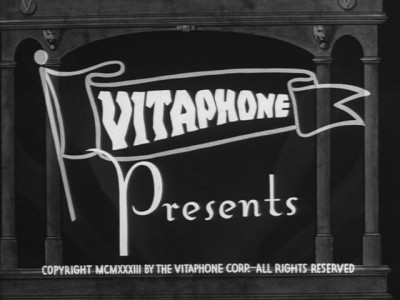 Though the first films were silent, people had been trying to make movies almost since the media's inception. As early as 1895 Thomas Edison marketed the Kinetophone, a machine that would allow a single viewer to watch a short reel of film with music piped into earphones, and though that system ultimately failed, the quest to add sound to films did not. There were a couple of big obstacles that stood in the way however. The first was amplification, how do you make the sound loud enough for an audience to hear it? (Phonographs at the time were not powered by electricity, you just wound it up and the sound emitted from a horn. It wasn't very loud, but sufficient for a small room.) The other problem was synchronization. How do you get the sound to match what's on the screen and stay in synch? Western Electric decided to try their hand mating sound to moving pictures and came up with one of the first practical systems. Using the Audion amplification tube and another new invention, the condenser microphone, they solved the volume problem. To handle the synching issue they came up with an elegantly simple solution: their system used a single motor to run both the film projector and a phonograph, ensuring that the two devices would always turn at the same rate. Their new system had its flaws but it sounded much better than the competing sound-on-film systems. So in 1925 Warner Brothers bought the system, dubbed Vitaphone, and started to experiment with adding synchronized sound to their films. Though the sound-on-disc system would be abandoned within a few years, Vitaphone was part of the Warner Brothers studio for decades and was responsible for their short subject releases, along with some high profile feature films. While it was the first workable solution to adding sound to movies, the sound-on-disc Vitaphone system was short lived. While it was generally easier (and cheaper) for theaters to initially upgrade to Vitaphone when compared to the competing sound-on-film system (which recorded the soundtrack directly on the nitrate stock itself) it was more cumbersome and unwieldy. One of the problems was that the oversized 16" records could only be played 20 times before they wore out. (The discs even had grids printed on them where the projectionist would check off how many times it had been played.) The biggest problem however was that editing was nearly impossible. This was a problem for both the studio that couldn't easily cut out a line that didn't work or rearrange the order of scenes without pressing new discs, and for the theaters that had to worry that a break in the film (and the removal of a couple of frames to fix it) would throw off the sound from there on. The added cost of replacing the discs was also a significant factor and sound-on-film became the dominant format in a few short years. In 1931 Warner finally made the switch too, and the Vitaphone system was obsolete.1 As with any obsolete system, the format was ignored for decades, but luckily the films weren't forgotten. Now, through Warner Brothers wonderful direct-to-consumer program The Warner Archives, literally hundreds of Vitaphone shorts and features are readily available. Filled with music, laughs, and more than a few surprises, these Vitaphone offerings are historical, entertaining, and educational. I've reviewed a few of the more important titles for DVDTalk recently, and here's an overview of what is available. (Click on the title to read the full review.): Don Juan What was the first feature-length film to have synchronized sound? If you ask most people they'll say The Jazz Singer (if they hazard a guess at all) but that wouldn't be quite correct. The famous Al Jolson movie was the first feature with synchronized speech. The first one with pre-recorded synchronized soundtrack was actually 1926's Don Juan staring John Barrymore. Made just a year after Warners purchased Vitaphone, this release was an important step along the road to talking pictures. In addition top the great feature itself, the disc includes six Vitaphone shorts that were created just for the film's release. Running nearly three hours all told, it's a fantastic package that reproduces what it was like to go to the movies nearly a century ago. 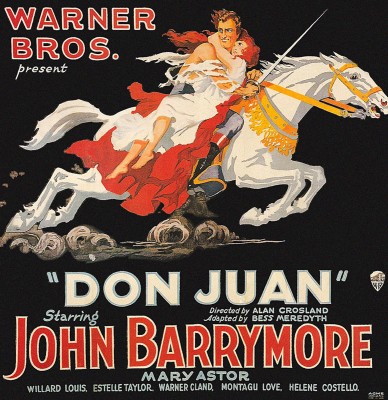 For their first Vitaphone feature, the brothers Warner wanted a top-notch film to draw in the crowds. For the leading man they selected John Barrymore who gained fame for his portrayals of Richard III and Hamlet on Broadway. They had recently signed the actor and paid a premium to have him in their stable. For the music accompaniment they hired the 107-piece New York Philharmonic Orchestra to record the score. The Vitaphone audio engineer George Groves, insisted on using an unheard of six microphones to record the performance, and then mixed the feeds live. The engineers working with him from Victor though he was crazy... they suggested just hanging a single microphone above the orchestra. The also created a slate of opening shorts to run before the feature, all showcasing the Vitaphone sound system. These were classical music and opera selections from big names in the music world, and it was all stated off with a filmed introduction of Will Hayes, President of the Motion Picture Producers and Distributors of America and future enforcer of the infamous Hays Code, talking and welcoming the audience to the special event. On top of all that, Warners managed to create a wonderful feature too. The movie, based on the fictional character who flirts and fights his way through medieval Rome, is an incredibly fun movie filled with action, humor, adventure, and some great drama. It's fairly amazing how they were able to fit so much into the film without it turning into a jumbled mess. At the beginning there's a very tense and suspenseful scene where Don Jose orders that a hole in a wall be bricked up, knowing that he will be sealing his wife's lover in, while she watches. There's several very funny segments too, including Don Juan having to juggle three lovers who all show up within moments of each other, followed by the husband of one of his conquests. The way that Juan gets out of that scrape was both hilarious and ingenious. The sword fight at the end is harrowing and well filmed, and watching Barrymore scamper up the sides of buildings to reach a woman's bedroom is very reminiscent of Douglas Fairbanks. When all is said and done, this is an excellent movie. On with the Show Always the innovator, in 1929 Vitaphone released the first all-talking feature in full color, 1929's On with the Show. As The Jazz Singer started a trend towards full-sound features a couple of years earlier, On with the Show had studios scrambling to release movies in glorious Technicolor. This early talkie does still survive, but unfortunately only as a black and white dupe (a 10-second fragment of the film in color surfaced in 2005, but that's all that still exists). Luckily the lack of color hasn't stopped The Warner Archives from distributing the movie to fans as it's quite enjoyable and has some more than a little historical value. 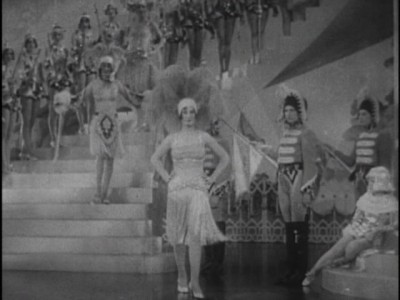
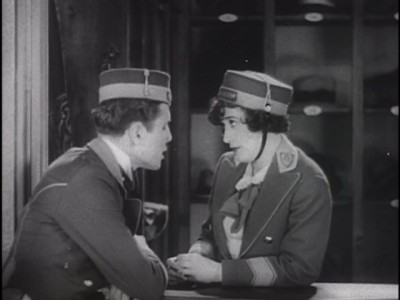 It's crunch time for the cast and crew of the traveling show Phantom Sweetheart. Having trekked across the country honing the musical/drama, the production is deep in debt and the producer has creditors on his tail. If they have a successful show tonight it will mean that they can go on to Broadway, fame, and fortune, and if not the show folds. To make matters worse, someone runs off with the box office receipts and all signs point to someone associated with the show... but who?? This is a fun film and the play-within-a-play format works well. They don't have to shoehorn in the musical numbers, they just show what's happening on stage whenever they feel the need for a song. The mish-mash of styles (comedy, drama mystery, and big musical productions) feel more natural too since some of it is just the play that's being preformed. In addition, there are a lot of faces that film buffs will recognize. The movie includes such stars as Joe E. Brown (he plays the rich man who falls for Jack Lemon in drag in Some Like it Hot), Ethyl Waters who sings Am I Blue? (which was written for this movie), Silent actress and WAMPAS Baby Star Sally O'Neil, Betty Compton (Docks of New York), and Vitaphone Shorts
While the preceding features were good, it's the shorts collections that will really get you excited. Warner Archives has released several multi-disc volumes and I highly recommend all of them. Vitaphone Varieties - Volume One "This act's a variety 'cause that's just what it's going to be one big surprise after another in fact just one darn thing after another..." from Songs and Impressions featuring Marlow and Jordon And that's exactly what you get with Vitaphone Varieties (1926-1930), just one big surprise after another. This wonderfully entertaining collection of 60 shorts from the earliest days of sound movies and it's well worth tracking down. There's a little bit of everything in this set, nicely showing what a wide range of entertainment was coming out of Just about all of these actors came from vaudeville and stepped into the Vitaphone studio for a quick couple of bucks. Little did they realize that over 80 years later, the films that they created would still be in circulation and a valuable archive of what the masses had for entertainment in those years between the wars. I had only heard of a couple of the people featured in these shorts before popping the discs in, so I discovered a lot of great acts. 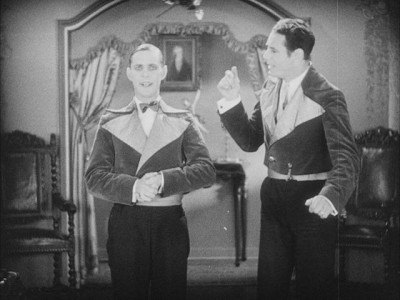
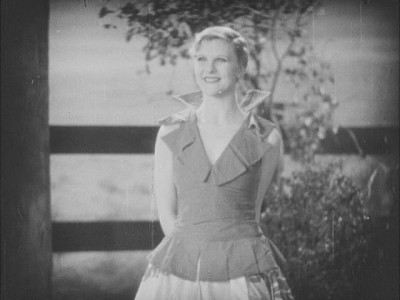 In general, each act was a mini-variety show: The comics will dance, the musicians goof around, and they all sing. These acts are polished and well timed, honed from years and years on the circuits. Not only are they tight, but when they do mess up it's hard to tell if it was intentional or not. Everyone had flubbed lines before and knew how to recover. For the comics, the patter was surprisingly fast-paced. These rapid-fire jokes don't follow a typical set up/punch line rhythm, either, but one punch line would be a set up for the next, as in this example from Val and Ernie Stanton's funny short Cut Yourself a Piece of Cake where one brother asks the other about his violin playing: Do you play be ear? No, I only play by request. Oh, what a shame, you must be terribly out of practice. Two of my favorite shorts were done by the team of Born and Vitaphone Varieties: Volume Two This collection has another great assortment of entertainment. It starts off with a musical short performed by the Hawaiian group the Kalama Quartet. Native Hawaiian music was pretty popular in the in the early part of the 20th century and this short sought to capitalize on both the music and the appeal of having scantily clad women dancing around. While the group itself look like they come from the South Pacific, most of the dancing girls look like they came from a chorus line. 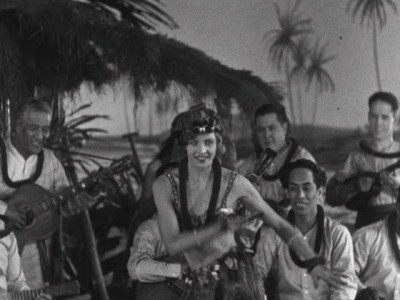
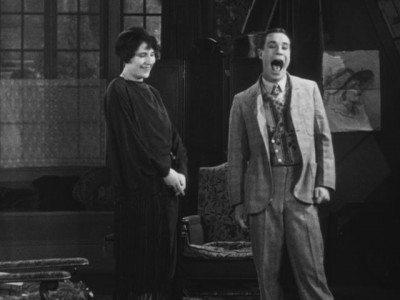 One of the best parts of watching these shorts is seeing some famous people very early in their careers. A very young Joe E. Brown is featured in one of the funnier shorts, and Fred Allen, who would become famous through his radio show (and the long running (staged) feud his show had with Jack Benny's) stars in Prize Playlets, a humorous film where Allen tries to get a Broadway producer interested in one of his many plays, all of the horrible. Fred Allen also co-wrote Faint Heart a short staring Bert Lahr who most people remember as the Cowardly Lion from The Wizard of Oz. Another star who would hit the big time via a radio is ventriloquist Edgar Bergen with his puppet Charlie McCarthy. (Am I the only one who finds it odd that a ventriloquist had a popular radio show? How do you know if his are moving??) Vitaphone Cavalcade of Musical Comedy Shorts The set starts out with a 1926 recording of vaudeville stars The Howard Brothers doing some of their jokes and singing. It's one of only two films the duo made (the other is There are a lot of surprising films included with this collection and just about every short offers something special. One of my favorite discoveries was a series of shorts (going by the names Movie Album, Movie Memories, Thrills of Yesteryear, and others) that riff silent movies ala MST3K. Each short was comprised of a series of clips from old films and a narrator would poke fun at the action. Not only were these pretty funny but the narrator also pointed out some of the stars featured in the films, many of them (like comedian John Bunny) forgotten by the time these were made. 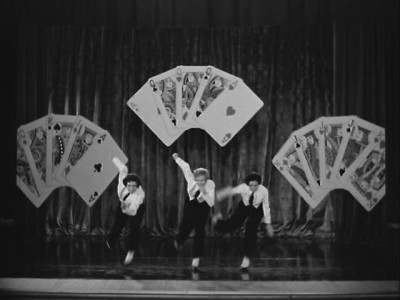
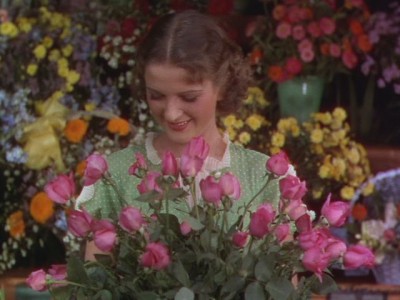 Vaudeville Reel is another great series of shorts and all of the installments are included here. These four movies highlighted some A-level vaudeville acts that were very, very good. One of the installments features an excellent trio of tap dancers who went by the name The Three Queens who inspired me to see if they had been in any other films (apparently they were in one more Vitaphone movie). Each short is made to resemble a vaudeville show with an attractive girl holding up a sign with the name of the act (is there a name for those things?) followed by a performance that lasts a couple of minutes. There are all sorts of acts: a guy who eats a lit cigar followed by a violin and then some of his suit, a dog trainer, Chinese acrobats, and even a diminutive song and dance team. As I said, all of the acts have been honed to perfection from years on the vaudeville circuit. Another highlight is the two Technicolor discs. These were a lot of fun and beautiful to watch. They start out with a pair of Leon Errol films, Service with a Smile and Good Morning Eve. The former has him trying to scam his insurance company after his service station burns down by insisting that all the work was done by attractive women in skimpy outfits who sang while they repaired cars. The latter is just as interesting. The Vitaphone Comedy Collection Vol. 1 - Roscoe ''Fatty'' Arbuckle/Shemp Howard (1932-1934) At long last, the final six movies made by Roscoe Arbuckle are available on DVD, and they're great. Even though he recycles gags from earlier comedies (a common practice in those days before DVD, TV, or even revival movie houses) Arbuckle is still creative and hilarious. The first one is one of the best. In Hey Pop! Arbuckle stars as a short order cook of amazing talent who adopts a young child that was left in the diner by his mother who is no longer able to take care of him. The first half has some great gags and shows off Arbuckle's juggling skills. He tosses a knife in the air, it spins a few rotations and then lands point-first in the butcher block and he then effortlessly flips a pancake over his head and catches it in the pan behind his back. When abandoned boy wanders into the kitchen Arbuckle decides to raise him, even though it means loosing his job. While the second part of the film will remind viewers of Chaplin's The Kid, the execution of Arbuckle and his ward running from officials who want to put him in an orphanage is drastically different. Here it's played for laughs and his ingenious ways of getting away from the police are hilarious. 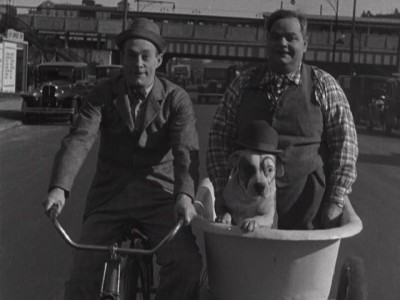
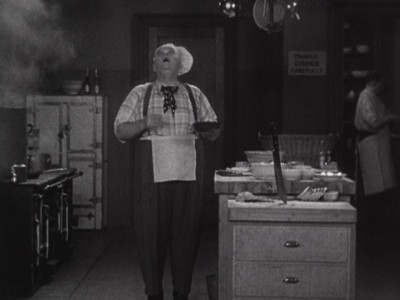 Another great offering is Have You Bean, which has Arbuckle and his partner, Fritz Hubert, running a grocery store. They take from gags from the Arbuckle film The Butcher Boy and expand on them beautifully, and the first act ends with an over-the-top flour fight that's not to be missed. There's also a nice twist near the end that works quite well. Those six films would make it worth the purchase price by itself, but there's a whole lot more. The other 13 shorts are devoted to appearances by Shemp Howard. Best known as "The Forgotten Stooge" (he replaced his brother, Curly Howard in the Three Stooges after Curly's stroke) Shemp had a solid career in Final Thoughts: All of these discs are wonderful. It's been a long time since I've had so much fun making my way through so many DVDs. If I had to recommend one collection to start off with, I'd say that Vitaphone Cavalcade of Musical Comedy Shorts gives you the most bang for your buck. That six-disc set retails for the same price as the four-disc Vitaphone Varieties - Volume One, and includes two whole DVDs of Technicolor shorts that are simply gorgeous. You can't go wrong with any of these however... they're all fantastic collections. For more information about the Vitaphone process, the shorts and movies that were made, and how you can even help sponsor the restoration of a Vitaphone movie, check out the Vitaphone Project, it's a wonderful resource. 1) The Vitaphone trademark wasn't however. It lived on as the division that made the shorts that would be shown before Warner Brothers films.
Archives
The 5 Most Influential Summer Blockbusters
Los Angeles Comic-Con Cosplay Spotlight Notes from Book Expo DVD Talk Interview: Batman: Return of the Caped Crusaders Compete Archives
Review Staff
| Newsletter Subscribe
| Join DVD Talk Forum
|
| |||||||||
| |||||||||||